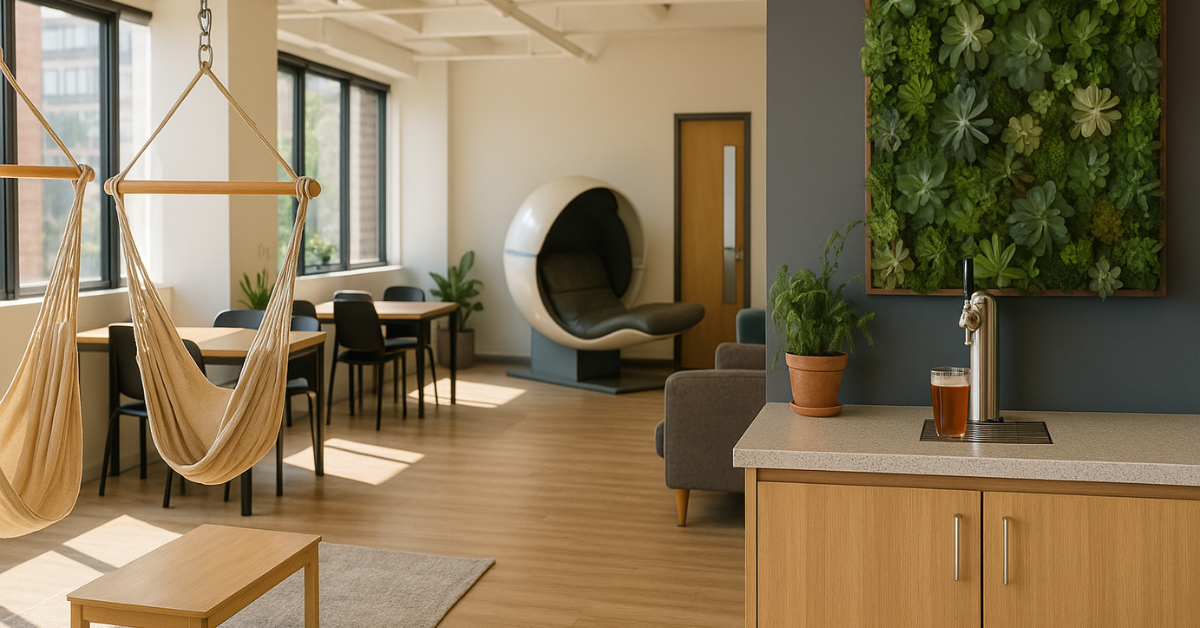Workspace IT: an Overview from the Coworking Pros

For new shared workspace operators, information technology (IT) can be challenging. If you have a dedicated IT person, great. If you don’t, you’ll need a crash course in IT before you open your space.
I spoke with Jay Smith and Ken Meshke who manage IT and facilities for Satellite Workspaces and Deskworks coworking software. Here are their best tips for getting top-quality IT in a shared workspace.
Bandwidth
Bandwidth—the type and speed of your internet service—is top priority for a shared workspace. Or, as Smith puts it, “The number one, two and three things are bandwidth, bandwidth, bandwidth. You’re absolutely nothing without bandwidth.”
Bandwidth is determined by your internet service provider (ISP). A general rule is to have 5 megabit per second (Mbps) of download per active user on site at any one time.
There are different types of circuits: copper, which is the Comcast, Time Warner-type stuff; then Ethernet Over Copper (EoC); then fiber, which is the best. You may be stuck with whatever’s available in your area. If you’re fortunate enough to have fiber in your area, your bandwidth will be noticeably better.
Get the fastest bandwidth you can get, and can afford, in your shared workspace. To run a space with more than 10 people, you need a minimum of 100 down, 20 up. That’s a good place to start.
The Basics
For IT in a shared workspace you’ll have:
- a primary Internet Service Provider (ISP) circuit
- a modem of some sort
- a router for your IP addresses with a built-in firewall
- a managed network switch
- a controller based wifi system: wifi controller and wifi access points
Those are the basics. You can scale up from there by adding more access points and switches for more ethernet points.
Get Gigabit Speed Products
All of your components need to be spec’d for gigabit speeds for the internal networks, routers, switches and access points. All of the ethernet of the network needs to be gigabit. We’re moving into what’s called the hyperweb, which is even faster internet than what we already have. You’re going to have to have equipment that can handle those speeds.
High-quality Router
With copper circuits, like what you get with Comcast and Time Warner, you’ll get an all-in-one router that has an access point, gives you all the IP addresses and has a firewall built in. The quality on these is often not high enough for shared workspaces so you’ll need to buy your own router. Deskworks supplies Mikrotik routers for member check-in because that’s a brand we like, but there are plenty of other capable routers out there.
Use Trusted Hardware
At Deskworks, we’re big fans of Cisco and Mikrotik products for our networking. We like Mikrotik mainly for it’s robust Linux based “RouterOS” (the operating system software) that allows us to fully manage our networks on small form factor routers (rack mounted), all the way up to dedicated network servers. This allows us to manage all types of networks, large and small. And we’ve figured out a combination of Cisco switches and access point controller systems that just works, and it works all the time.
Dedicated IT Person
Have a dedicated person to handle IT in your shared workspace, even if it’s an on-call service. Having someone who is always available makes a difference. There are so many little things that can go wrong that you want to have an expert who can respond immediately.
In addition to an expert, be sure you have someone at your center who is comfortable moving wires around, turning things on and off, etc., so that they can be the hands for an IT person on the other end of a phone line. This can save an awful lot of money by avoiding house calls.
Battery Backups
Make sure you have battery backups in case of a power failure. Most fiber connections don’t need electricity to work, but if the power goes out for the network, no one can use the internet. If you have a battery backup and you have a fiber connection, you can run your entire network off a battery backup for as long as the batteries last, or until the power comes back on.
Update Your IT Infrastructure
If your space has been around for awhile, you may need to update your IT infrastructure—in particular, your wifi integration. In the last two years, 80 MHz channels have become available. This will give you faster wifi connections.
The standard has been 40 MHz, so going to 80 MHz is like going from a five lane freeway to a 10 lane freeway and the data rates go anywhere from 300 to 600 or 1300 megabits per second. This is generally a lot faster than the primary ISP circuit is, but if you’re talking to devices on the same network and transferring stuff, those insanely fast rates are going to let data move much faster.
Launching a coworking space? We can help. Email us to learn more about Deskworks workspace software or to schedule a free demo.
Access Point Locations
The ideal location for access points has to do in part with the square footage and layout of a space, but it also has to do with the construction of the walls and the building itself. Sheetrock is different than brick or glass in terms of transmission and the R Factor for the insulation makes a difference.
You can get antennas to direct the wifi signals. There are many different types of antennas out there for different applications and deployments. You may require a high or low dB antenna to conform to the wifi signals to your needs or space.
Know Your Surroundings
Depending on other radio frequency (RF) signals in your neighborhood, your signal may get drowned out. You can also send a signal too far. If the decibel is too strong, you can blow the signal out of your space so anyone who is close doesn’t see the signal very well because it was being pushed too far. In that case, get a smaller antenna to bring the signal back inside.
Tune Your Wifi Frequencies
Spend time to learn which frequencies work for the area you’re in, whether urban, suburban or rural. There are some frequencies that are better than others, but that’s not always the case—it depends on what’s around your space.
Set Up Bandwidth Shaping
Bandwidth shaping (also called traffic priority), is a way to regulate network data transfer. Doing so ensures that some users don’t use more bandwidth than others, leaving little for the rest of the users on the network. For example, if people are streaming videos in high-definition, it affects the flow of traffic in the network and VOIP phones may experience network jitter. This results in echoes and dropped calls. Bandwidth shaping is done within the router.
Use a Managed Switch
A switch is a device that splits one connection into multiple connections. With managed switches, you can give people their own network on the same shared internet connection, while keeping the different networks secure from one another.
Invest in Your IT
Don’t skimp when it comes to IT in a shared workspace. Your IT is what is servicing your clientele, so give them the best you can offer. Put IT at the top of the priorities list for your space. Your IT infrastructure is carrying your business, so if you don’t invest in your IT, you’ll end up paying for it later.





